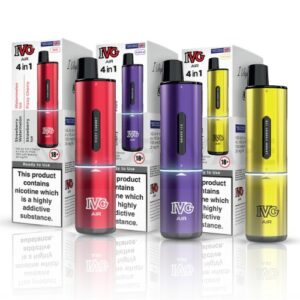Achieving clear, smooth, and youthful skin has always been a goal for many. In recent years, this pursuit has become more advanced and accessible, particularly in urban beauty hubs like Riyadh. Among the most effective non-invasive cosmetic treatments gaining popularity is the chemical peel. Known for its ability to dramatically improve skin tone, texture, and overall appearance, a chemical peel offers a solution for a range of skin concerns—from dullness and pigmentation to fine lines and acne scars.
Today,Chemical peels in Riyadh are not just a passing trend but an essential part of skincare routines for individuals seeking lasting radiance and rejuvenation. This blog will take you through everything you need to know about the treatment—from how it works to what to expect, including types, benefits, safety, and emerging trends in 2025.
What Are Chemical Peels?
Chemical peels are dermatological treatments that involve applying a solution to the skin to exfoliate and eventually peel off the top layers. This controlled injury prompts the skin to regenerate, revealing fresher, smoother, and healthier skin underneath.
How They Work
The process typically uses acids like glycolic acid, salicylic acid, or trichloroacetic acid (TCA), depending on the skin type and issue being treated. The strength of the peel—superficial, medium, or deep—determines how much skin is removed and how long the recovery takes. With proper assessment, the right peel can dramatically improve skin appearance in just a few sessions.
Why People Choose Chemical Peels in Riyadh
Skincare needs in Riyadh are unique due to the city’s hot, dry climate and high exposure to UV rays. These environmental factors often lead to pigmentation, sun damage, dehydration, and uneven skin tone. Residents are increasingly turning to Chemical Peels in Riyadh to address these issues effectively.
The appeal lies in the treatment’s versatility and its ability to deliver visible results without surgery. Whether you’re targeting stubborn acne scars or want to reduce signs of aging, chemical peels offer a practical, non-invasive solution with minimal downtime.
Types of Chemical Peels and Their Purposes
Understanding the different types of peels is essential for choosing the right one for your skin goals. Here’s a breakdown:
Superficial Peels
These peels use mild acids like alpha-hydroxy acids (AHAs) to gently exfoliate the outermost layer of skin. Ideal for first-timers, they address dullness, mild discoloration, and rough texture with little to no downtime.
Medium Peels
Using stronger agents like TCA, medium peels penetrate deeper into the skin. They are effective for treating wrinkles, pigmentation, and acne scars. Expect some redness and peeling post-treatment.
Deep Peels
Deep peels, such as those using phenol, offer dramatic results for severe sun damage, deep wrinkles, and blotchy skin. However, they require longer recovery and more precautions.
Benefits of Regular Chemical Peels
Whether you’re seeking smoother texture or brighter complexion, the benefits of Chemical peels in Riyadh can be transformative when performed correctly.
-
Improves Skin Tone: Removes pigmentation and uneven skin patches caused by sun exposure or aging.
-
Reduces Fine Lines: Stimulates collagen production, smoothing out fine lines and early wrinkles.
-
Treats Acne and Scars: Controls breakouts and fades acne scars over time.
-
Enhances Skincare: Post-peel, the skin absorbs products more effectively, improving overall skin health.
-
Boosts Confidence: Clear, radiant skin often leads to increased self-esteem and satisfaction with appearance.
Are Chemical Peels Safe for All Skin Types?
When administered by trained professionals, chemical peels are generally safe for most skin types. However, individuals with darker skin tones should approach deep peels with caution, as there is a higher risk of hyperpigmentation. That’s why proper consultation and a tailored treatment plan are essential.
A patch test is often performed to assess the skin’s sensitivity to the solution. Professionals also consider your skincare history, current products, and lifestyle to minimize potential reactions.
Pre- and Post-Treatment Care
The success of a chemical peel doesn’t rely solely on the treatment itself—it also depends on the preparation and aftercare.
Pre-Treatment
Avoid retinoids, exfoliants, and sun exposure for at least a week prior to your session. Stay hydrated and inform the specialist about any medications or skin conditions.
Post-Treatment
Post-peel care involves moisturizing, avoiding sun exposure, and skipping makeup for a few days. It’s also important not to pick or peel flaking skin, as this can cause scarring. Use gentle cleansers and always apply SPF to protect the newly revealed skin.
How Often Should You Get a Chemical Peel?
Frequency depends on the type of peel and your skin goals. Superficial peels can be done every 4–6 weeks, while medium peels are usually spaced 3–6 months apart. Deep peels are typically done once in a lifetime due to their intensity.
Establishing a regular peel schedule can keep your skin in optimal condition throughout the year, especially in challenging climates like Riyadh’s.
Trending: Combination Treatments with Chemical Peels
As skincare becomes more personalized, many are combining chemical peels with other treatments for enhanced results. Popular combinations include:
-
Microneedling + Chemical Peels: For deeper collagen stimulation.
-
Laser Therapy + Peels: To treat stubborn pigmentation and scarring.
-
Hydrafacial + Light Peel: For deep cleansing followed by rejuvenation.
These integrative approaches target multiple layers of skin and address several concerns in one comprehensive plan.
What to Expect in 2025: Chemical Peel Innovations
The future of Chemical Peels in Riyadh is heading toward greater personalization and minimal downtime. New peel formulations are being developed with botanical ingredients and peptides to reduce irritation and speed up healing. Smart diagnostics and AI skin analysis may also play a role in selecting the perfect peel type based on real-time skin data.
Expect quicker recovery times, fewer side effects, and more skin-type-specific peels in the coming years. This means safer and more effective results, especially for those with sensitive or darker skin tones.
🌟Frequently Asked Questions About Chemical Peels in Riyadh🌟
Q1: Can chemical peels treat active acne?
Yes, certain light to medium peels with salicylic acid are designed to reduce inflammation, unclog pores, and help control active breakouts over time.
Q2: Is there any downtime after a chemical peel?
Mild peels typically have no downtime, while medium and deep peels may cause redness and flaking for several days. Your provider will give you specific aftercare instructions.
Q3: Are chemical peels painful?
Most peels cause a mild tingling or stinging sensation during application. Medium and deep peels may be more intense, but numbing agents are often used to reduce discomfort.
Q4: How soon can I see results from a chemical peel?
Visible improvement often begins within 3–7 days after treatment, depending on the depth of the peel. Results continue to improve as the skin heals and regenerates.
Conclusion
Chemical Peels in Riyadh are more than just a skincare treatment—they’re a transformative journey toward healthier, brighter, and more confident skin. Whether you’re new to the concept or looking






